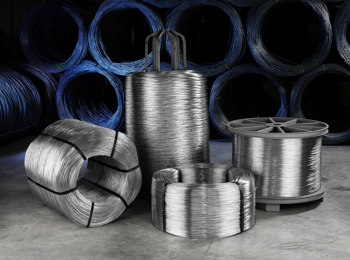Dec . 12, 2024 09:34 Back to list
china gabion construction details
Gabion Construction in China A Detailed Overview
Gabion structures have gained significant popularity in various construction projects around the world due to their durability, ecological benefits, and aesthetic appeal. In China, gabion construction has become a prominent technique for erosion control, riverbank stabilization, and landscape enhancement. This article explores the details of gabion construction in China, including materials, methods, and applications.
What are Gabions?
Gabions are wire mesh containers filled with rocks, stones, or similar materials. They are typically rectangular or cubic and are used to construct retaining walls, barriers, and erosion control structures. Gabions offer a sustainable alternative to traditional construction methods, as they blend well with natural surroundings and enhance environmental stability.
Materials Used in Gabion Construction
The primary materials involved in gabion construction include
1. Wire Mesh The wire mesh used in gabions is usually made from galvanized steel or PVC-coated steel. This provides the mesh with resistance to corrosion and rust, ensuring the longevity of the structure. The wire is typically woven into a hexagonal pattern, which provides strength and flexibility.
2. Filling Materials The filling material for gabions can vary depending on the project requirements. Common filling materials include locally sourced rocks, concrete debris, or even natural stones. The choice of materials depends on the aesthetic requirements, availability, and budget.
3. Connecting Materials In addition to the gabion units themselves, connecting materials such as tie wires or lacing wires are necessary to secure the gabions in place and ensure structural integrity.
Construction Methods
The construction of gabion structures involves several critical steps that must be followed to ensure a successful outcome
1. Site Preparation Before construction begins, the site must be prepared. This involves clearing debris, leveling the ground, and ensuring proper drainage. Adequate site preparation is essential to prevent future erosion and instability.
2. Design and Layout A well-thought-out design is crucial for effective gabion construction. Professionals often calculate the appropriate dimensions, load capacities, and positioning based on the specific project needs. The layout should ensure that water flow and soil stability are preserved.
china gabion construction details

3. Assembly of Gabions Gabions are often delivered to the site in a flat-packed state. The first step in assembly involves unfolding the gabion units and securing the mesh sides together using lacing wires. Workers then position the gabion at the designated site.
4. Filling the Gabions Once the gabions are assembled, they are filled with the chosen material. It is important to ensure that the stones are packed tightly to provide strength and stability. This can be achieved by hand-filling or using machinery for larger projects.
5. Securing the Gabions After filling, the top of the gabion is folded and secured using tie wires to prevent spillage of the filling material. Additional layers may be added if the structure requires it.
6. Final Touches The final step involves adding any necessary landscaping, such as plants or grass, to enhance the visual appeal and environmental integration of the gabion structure.
Applications of Gabion Construction in China
In China, gabion construction is widely used in various applications
1. Erosion Control Gabions are particularly effective in preventing soil erosion in areas prone to heavy rainfall or flooding. They dissipate energy from flowing water and can help to stabilize riverbanks, slopes, and roadways.
2. Infrastructure Projects Gabion walls are increasingly used in infrastructure projects, including the construction of bridges, retaining walls for highways, and flood control barriers. Their flexibility and strength make them ideal for supporting heavy loads.
3. Landscape Architecture Many architects in China incorporate gabion structures into landscape designs. They can be used as decorative features in parks and gardens, providing both functional and aesthetic benefits.
4. Environmental Protection Gabion construction supports ecological restoration efforts by promoting vegetation growth around streams and rivers, which enhances biodiversity and habitat protection.
Conclusion
Gabion construction offers a versatile and sustainable solution for a wide range of issues in China, from erosion control to landscape enhancement. The approach not only provides stability and durability but also allows for environmental integration, making it an invaluable technique in modern construction practices. With ongoing advancements in materials and construction methods, the future of gabion construction in China looks promising, poised to adapt and meet the challenges of sustainable development.
-
Versatility of Chain Link Fence Gabion
NewsMay.13,2025
-
Trusted Gabion Box Suppliers
NewsMay.13,2025
-
PVC Coated Gabion for Long-Lasting Structural Integrity
NewsMay.13,2025
-
Garden Gabion for Stylish
NewsMay.13,2025
-
Galvanized Gabion for Durable Outdoor Structures
NewsMay.13,2025
-
Gabion Box Factory
NewsMay.13,2025
-
Gabion Basket Wire Gauge and Mesh
NewsMay.13,2025






